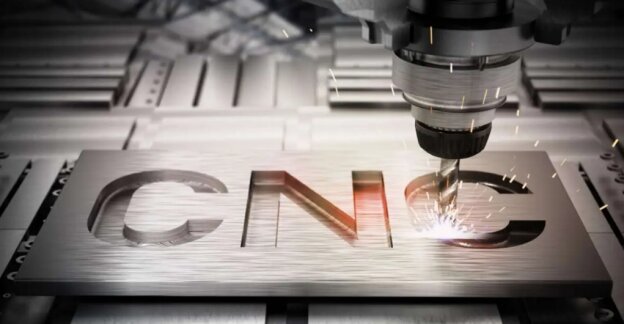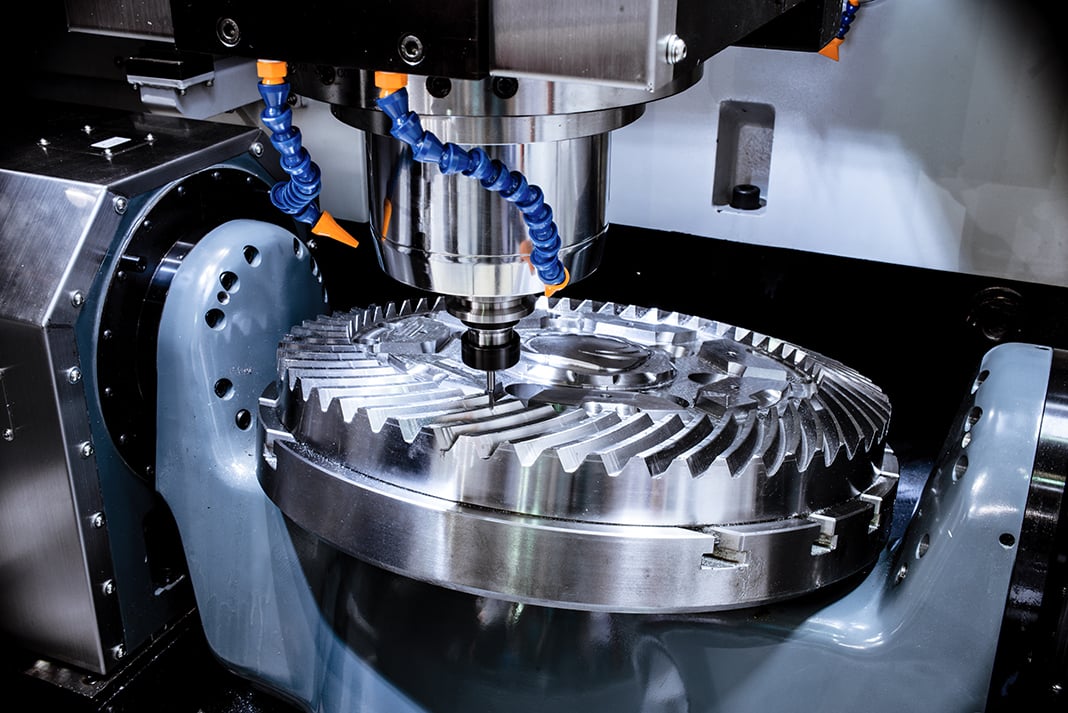Welcome! Today, you'll learn about CNC machining tolerances. Your understanding will grow, and your mind will unlock new ways to approach machining.
This blog uncovers the significance of these vital parameters. By the end, you'll hold the keys to precision in manufacturing.

In the world of CNC machining, tolerances matter greatly. Tolerances set the standard for the acceptable amount of deviation from the desired outcome.
In practical terms, if you set a tolerance of +/- 0.005 inches, the machine can deviate by this amount. Thus, tolerances ensure accuracy, critical for precise applications.
•High Accuracy: CNC machining tolerances limit errors, ensuring high-precision output.
•Better Efficiency: Tolerance control enhances the operational efficiency of machines, reducing waste.
•Enhanced Productivity: Precision, driven by well-set tolerances, can improve production speed.
•Cost-Effective: Proper tolerance settings may save costs due to fewer rejected parts.
•Quality Assurance: Tolerances serve as quality check parameters in CNC machining processes.
Machining tolerances refer to the degree of variance acceptable in the size and geometry of a manufactured part. They are expressed as plus or minus values, like +/- 0.001 inches.
These values depict the maximum permissible deviation from the ideal specifications.
•Ensuring Fit: Tolerances ensure the right fit for assembled parts.
•Guaranteeing Function: Tolerances can affect how parts function together.
•Keeping Standards: Tolerances help to maintain industrial manufacturing standards.
•Delivering Consistency: Proper tolerance levels ensure consistency in production.
•Promoting Safety: Adhering to tolerances can prevent potential operational risks.
CNC machining tolerances calculation revolves around the tool, material, and the desired final output. For instance, if a tool can produce a hole with a diameter of 0.500 inches +/- 0.001 inches, that’s the tolerance. It’s about balancing precision and costs.
√True Position: A term in geometric tolerancing, it refers to the ideal position of a feature.
√Maximum Material Condition: The condition where a feature contains the maximum amount of material within the specified tolerance.
√Least Material Condition: The opposite of the above, where a feature contains the minimum amount of material.
√Bilateral Tolerance: A tolerance type, it allows deviation in both directions from the nominal dimension.
√Unilateral Tolerance: A tolerance type where variation is allowed in one direction only.
| Linear dimension range (mm) | Tolerance Class | |||
| f (fine) | m (medium) | c (coarse) | v (very coarse) | |
| 0.5-3 | ±0.05 | ±0.1 | ±0.2 | - |
| 3-6 | ±0.05 | ±0.1 | ±0.3 | ±0.5 |
| 6-30 | ±1 | ±0.2 | ±0.5 | ±1 |
|
30-120 |
±0.15 | ±0.3 | ±0.8 | ±1.5 |
| 120-400 | ±0.2 | ±0.5 | ±1.2 | ±2.5 |
| 400-1000 | ±0.3 | ±0.8 | ±2.0 | ±4 |
| 1000-2000 | ±0.5 | ±1.2 | ±3.0 | ±6 |
| 2000-4000 | - | ±2.0 | ±4.0 | ±18 |
Linear Dimensions:
Linear dimensions in CNC machining are tolerances placed on lengths, diameters, or widths of a part. For example, a rod could have a length tolerance of +/- 0.005 inches, controlling the size precisely.
Angular Dimensions:
Angular dimensions in CNC machining control the angles. For instance, a part might need an angle of 90 degrees with a tolerance of +/- 0.5 degrees. This tolerance ensures the correct shape.
Geometric Tolerances:
Geometric tolerances in CNC machining control features beyond size and shape, such as roundness, flatness, or symmetry. For example, a surface might have a flatness tolerance of 0.001 inches. It helps parts fit together well.
|
Attribute |
Linear Dimensions |
Angular Dimensions |
Geometric Tolerances |
|
Controls |
Lengths, Diameters, Widths |
Angles |
Shape Features |
|
Example Property |
Length |
Angle |
Flatness |
|
Tolerance Type |
Dimensional |
Angular |
Geometrical |
|
Typical Unit |
Inches |
Degrees |
Inches |
|
Ensures |
Size Precision |
Correct Shape |
Parts Fit |
|
Example Tolerance |
+/- 0.005 inches |
+/- 0.5 degrees |
0.001 inches |
Table on Types of CNC Machining Tolerances!
ISO tolerance standards guide CNC machining tolerances. These norms ensure parts fit and work well. Every component gets a unique measurement. Like a tolerance of +/- 0.001 inches. Meeting these standards is critical in industries like aerospace and automotive. It ensures safety and high performance.
•American National Standards Institute (ANSI): Provides general tolerances for linear dimensions, radius, and angle dimensions.
•DIN ISO 2768-1: A German standard applicable to CNC machining parts without individual tolerance indications.
•Japanese Industrial Standards (JIS): Used for a broad spectrum of technologies, including CNC machining.
•BSI British Standards: Used in the UK, these provide specific machining guidelines.
•GB Standards (China): Set of Chinese industrial standards used extensively in CNC manufacturing there.
√Milling: A tolerance of +/- 0.005 inches is typical for cnc milling machine.
√Turning: This technique often sees a tolerance of +/- 0.002 inches.
√Grinding: Here, a tolerance of +/- 0.0002 inches is commonplace.
√Drilling: CNC drilling machine operations often have a tolerance of +/- 0.005 inches.
√Laser Cutting: Laser techniques usually offer a tolerance of +/- 0.002 inches.
•Aerospace Parts: Tight tolerances, often +/- 0.0002 inches, for safety-critical components.
• Automotive Components: A broad range of tolerances, usually between +/- 0.001 and +/- 0.005 inches.
•Medical Devices: For medical industry and instruments, tight tolerances of +/- 0.0005 inches are typical.
•Construction Equipment: More forgiving tolerances, often +/- 0.01 inches, for large-scale parts.
•Designing: Engineers use CAD to design the part.
•Converting: CAM software converts the design to CNC code.
•Setting Up: The machine is prepared with the right tools and materials.
•Machining: The machine follows the CNC code to create the part.
•Inspection: Engineers check the part against the design.
Tolerances are integral to the CNC machining process. Once a design is made, an engineer sets the tolerances. These act as a boundary for the CNC machine.
They guide the machine's work. By following the tolerance, the machine ensures the part's precise dimensions. Remember, precision matters in CNC machining tolerances. It's a critical factor in product safety and performance.

Consider Material Type: Different materials like aluminum, steel, and plastic hold distinct tolerances. Understanding the substance helps set proper parameters.
Measure Geometric Tolerance: This measures how much the part’s shape and size can differ from the ideal design.
Understand Surface Roughness: This is how smooth the surface of your part will be. Lower values mean smoother finishes.
Respect Dimensional Tolerance: This refers to how much physical dimensions can vary. Lower numbers signify tighter tolerances.
Inspect Position Tolerance: This determines how much a feature's location can deviate from its theoretical perfect position.
Remember Flatness Tolerance: This limits the amount of waviness or roughness a flat surface can have.
Account for Cylindricity Tolerance: This ensures that all points of a cylindrical feature are equidistant from the center axis.
Check Roundness Tolerance: This guarantees that every point on a circle is equidistant from the center.
Opt for Precision Machining: This technique allows you to achieve highly accurate parts, within microns of the desired result.
Choose Milling: This technique uses rotary cutters to remove material, providing a wide range of tolerances.
Use Turning: This method rotates the workpiece while the cutting tool remains stationary, creating parts with tighter tolerances.
Select Drilling: This technique involves creating holes in a material, needing precise tolerances to achieve accuracy.
Adopt Grinding: This process refines the surface of a workpiece, providing fine tolerances.
Implement Lathing: This technique carves out precise shapes, offering high-precision tolerances.
Apply Broaching: This method involves a tool with several teeth that increase in size, delivering precise tolerance.
Improvement in Product Quality: CNC machining tolerances allow for precision in creating parts. With exact measurements, products exhibit high quality.
Accurate parts mean fewer faults. They fit together better. Machines work more efficiently. Customers are more satisfied. Product returns decrease. Profits rise.
Increase in Manufacturing Efficiency: Tight CNC machining tolerances make manufacturing more efficient. There's less waste. More materials get used in the product.
The manufacturing process is more accurate. Products come out right the first time. There's no need to redo them. Time and resources are saved. More products can be made in the same amount of time.
Enhancements in Product Lifecycle: Products made with precise CNC machining tolerances last longer. They don't break as easily. They work better. Their parts fit together more smoothly. This makes the product more reliable. It lasts longer before needing to be replaced.
This extends the product lifecycle. This is good for customers and the environment. It reduces waste. It saves money in the long run.
Increased Cost:
Tight CNC machining tolerances can inflate costs. Every part has to be exact. If an error pops up, the whole batch is lost. That leads to more raw material usage. More man-hours add to the final bill, too.
Complex Design Requirements:
Precision can complicate designs. All parts must align perfectly. High-level expertise becomes critical. If there's a design flaw, it gets magnified. Minor deviations turn into significant errors. That puts your project timeline at risk.
Challenges in Meeting High Precision Standards:
Meeting tight tolerances is hard. For example, micro milling of 0.01 mm is tricky. Imagine carving a tiny piece of metal. Then, doing it again. And again. Consistency is tough. If you're off by 0.001 mm, it's a fail.
•Misalignment: Slight shifts cause errors. Regular machine checks solve this.
•Overheating: Excess heat expands materials. Cooling systems can prevent this.
•Incorrect Tooling: Wrong tools make incorrect cuts. Always use the right tool for each job.
•Software Glitches: Software problems throw off readings. Regular updates help keep things smooth.
•Human Error: People make mistakes. Proper training reduces this risk.
•Wear and Tear: Machines wear out. Regular maintenance keeps them in top shape.
Quality assurance keeps things right. Its job is to catch errors before they become big problems. It ensures all parts meet CNC machining tolerances. That means fewer reworks. And less waste. Most importantly, it means happy customers.

•Regular Inspections: Checking each part ensures they're all perfect.
•Calibrated Equipment: Equipment that's set correctly prevents errors.
•Trained Operators: Well-trained workers make fewer mistakes.
•Defined Processes: Clear instructions make for smooth operations.
•Up-to-date Software: Good software ensures accurate readings.
•Proper Maintenance: Keeping machines in good shape prevents problems.
Balanced Material Selection: Pick the right material for the job. Different materials have different behaviors. Aluminum shrinks less than steel during cooling.
Precise Tooling: Select sharp, high-quality tools. Dull or poor-quality tools create inconsistencies. A good tool minimizes errors, improving tolerances.
Appropriate Feed and Speed Rates: Too fast or slow affects tolerances. Look for the right balance. Find optimal speed for each material.
Temperature Control: Heat affects material dimensions. Manage workshop temperature for consistent results. A stable temperature prevents material warping.
Regular Equipment Calibration: Calibrate machines often. Uncalibrated equipment causes mistakes. A well-calibrated CNC machine ensures precise tolerances.
Advanced Software Usage: Use latest CNC programming. Modern software has better algorithms. Updated software maximizes machining tolerances.
Frequent Inspection: Regularly check part dimensions. Spot problems early with regular checks. Swift corrections prevent further tolerance issues.
Analyze Tool Wear: Tools degrade with use. Review tool conditions frequently. Replace worn-out tools to maintain tolerances.
Monitor Machine Vibration: Excess vibration leads to errors. Keep machine stability at peak. Stable machines produce accurate parts.
Check for Material Defects: Materials can have hidden flaws. Inspect each material batch. Quality materials support tight tolerances.
Consistent Machine Maintenance: Prevent machine failures. Well-maintained machines have better accuracy.
Software Update Checks: Ensure software is up-to-date. Old software can cause errors. Fresh software enhances CNC machining tolerances.
In summary, mastering CNC machining tolerances unlocks vast potential in precision manufacturing. The journey to understanding tolerances has been eye-opening. Remember, precision and efficiency in manufacturing stem from tolerances. Therefore, continue exploring and learning. For more insights, visit CNCYANGSEN. Knowledge awaits!